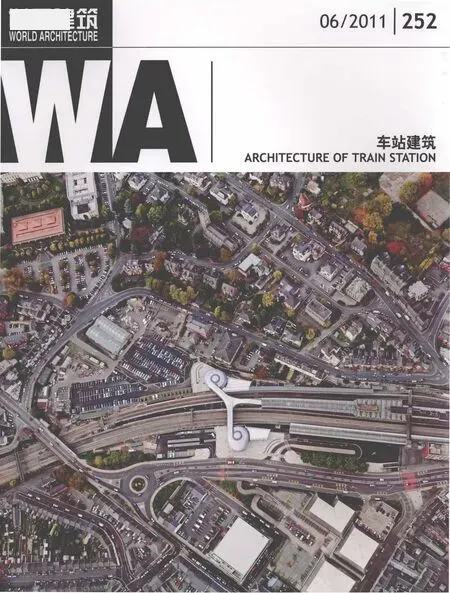跨海湾交通枢纽中心,旧金山,加利福尼亚,美国
建筑设计:佩里·克拉克·佩里建筑事务所
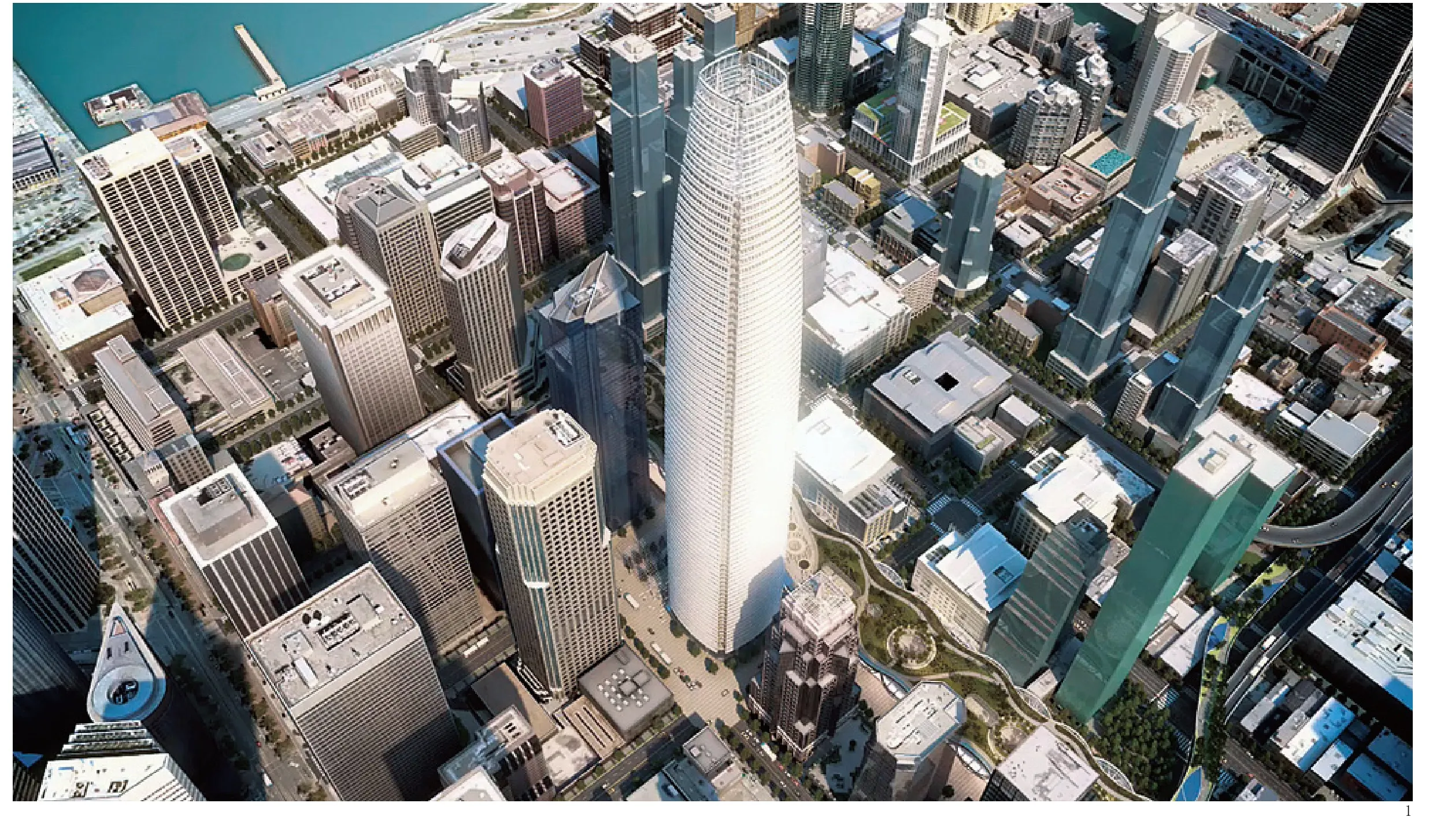
1 跨海湾大厦鸟瞰图/Transbay Tower aerial view
跨海湾交通枢纽中心和大厦有望成为旧金山的两座重要建筑,该项目通过建筑学、工程学和城市设计传达出地区、城市和区域的精神。
先进的多模式交通枢纽中心的设计优美、明亮、温馨,赋有安全感。波浪般起伏的玻璃外墙宛如花瓣,为街道营造出优雅的氛围。这些波浪形的轮廓也是建筑坚固的钢筋混凝土结构体系的反映,这种结构设计能够抵御强烈的地震。米申街上的公共广场标示出交通枢纽中心的主入口。主要的公共空间“大堂”内部将布满阳光。一个约36.6m(120ft)高的光柱结构是项目的重要元素,从公园延伸至下层的中央广场。光柱顶部有一个约372m2(4 000sqft)的采光穹顶。光柱不仅是建筑的结构支撑,也将自然光引入室内,同时框景出上层的公园。
公园是交通枢纽中心的核心,它为社区提供活动和休闲放松的场所,将成为人们日常生活和工作体验的一部分。步行道、游乐场、咖啡厅、表演场地和代表不同自然环境的12个花园,构成了一个完整的城市公园。
跨海湾交通枢纽中心是国家绿色建筑等级最高的项目之一,它将采用多重可持续设计策略。最显著的是公园,它通过树木、景观和水管理系统吸收和过滤污染物。在枢纽中心之下,建筑基础内部建造了一个巨大的地热交换系统。这个系统覆盖了4个半街区,将成为世界上最大的地热设施之一。为了进一步减少能耗,建筑采用了自然通风系统,而且大部分空间将获得自然采光。最后,建筑还能够处理雨水并回用中水。中水回用和保存体系将每年节约9 200万加仑的用水,相当于19个奥运会规格的游泳池。本项目的目标是获得LEED金级认证。
该建筑预期为交通中转的乘客和一般公众提供服务,这里设有沿街店面、咖啡厅和公共走廊。此外,建筑汇集了著名的当代艺术家詹姆斯·卡彭特、Julie Chang、珍妮·霍尔泽和奈德·卡恩的作品。
跨海湾大厦将成为旧金山的标志性景观之一,与金门大桥、泛美大厦共同勾勒出城市天际线。大厦纤细、锥形的轮廓减少了投射到周边建筑和街区上的阴影。金属与玻璃结合的大厦表面缓解了过度的眩光,最大限度地减少了反射和光点。大厦在街道层退后,让出宽敞的人行道,米申街上的天幕覆盖了整个街区,为行人遮挡了大厦底层的强风,同时弱化了大厦的体量。大厦的设计旨在实现环境的可持续性,结合了若干条绿色建筑的策略,包括被动式遮阳板、高性能玻璃、地热制冷和风力发电。□(项琳斐 译)
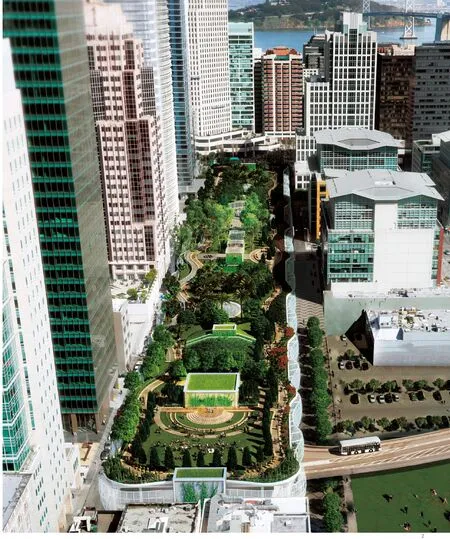
2 跨海湾交通枢纽中心鸟瞰图/Transbay Transit Center aerial view
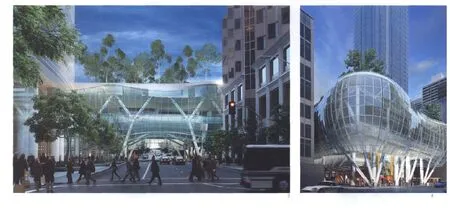
3.4 外景/Exterior view
5 绿植中的玻璃盒子/Glass box a full planting
6 TTC光柱广场/TTC light column plaza
Transbay Transit Center and Tower aspire to become two of San Francisco’s great buildings,expressing through architecture, engineering, and urban design the spirit of the neighborhood, city,and region.
The multi-modal, state-of-the art Transit Center is designed to be graceful, luminous,welcoming and safe. An exterior glass wall with undulating forms like petals of a flower will create a civilized presence on the street. These undulations also respond to the building’s robust concrete-andsteel structural system, which is engineered for performance in the event of severe earthquakes.A public plaza on Mission Street marks the primary entrance to the Transit Center. The main public space-the Grand Hall-will be suffused with natural light. The central element, a 120-foot-tall light column, is a structural component that reaches from the park to the Lower Concourse. Topped with a 4 000-square-foot domed skylight, the light column not only supports the building, but draws daylight deep into the interior and frames views of the park above.
The park is the heart of the Transit Center.Offering activity and as well as quiet relaxation, the park will be part of the daily experience of people living and working in the neighborhood. Walking paths, playgrounds, cafés, a performance venue,and 12 gardens, each representing a different natural environment, form a full-fledged urban park.In addition, a 1 000-foot-long fountain will have jets of water triggered by the movement of buses below. Over time, bridges will be added to connect adjacent buildings to the park, fully integrating it into San Francisco’s urban fabric.
As one of the country’s greenest buildings, the Transbay Transit Center will use multiple sustainable design strategies. The most visible is the park, which will absorb and filter pollutants through its trees,landscape and water management system. Beneath the Transit Center, a massive geothermal heat exchange system will be built into the building’s foundation. Running the length of 4 1/2 city blocks,it will be one of the largest geothermal installations in the world. To further reduce energy consumption,the building will be naturally ventilated and most spaces will be naturally lit. Finally, the building will manage stormwater and reuse greywater. The water reuse and conservation system will save 9.2 million gallons per year, the equivalent of 19 Olympic-sized swimming pools. The building is targeted to achieve a Gold LEED rating.
Intended to be a destination for both transit users and the general public, the building will offer street-level shops, cafés and public promenades.In addition, the architecture integrates works by significant contemporary artists including James Carpenter, Julie Chang, Jenny Holzer, and Ned Kahn.
Transbay Tower will join the Golden Gate Bridge and the Transamerica Building as one of the defining images in San Francisco’s skyline. The Tower’s slender, tapering profile reduces its shadow on surrounding streets and buildings. Its textured mix of metal and glass alleviates excessive glare,minimizing reflections and bright spots. At the street, the tower steps back to allow for wider sidewalks, and a street-scaled canopy runs along Mission and First, protecting pedestrians from downdrafts and lightening the tower’s presence.Designed to be environmentally sustainable, the Tower incorporates several green building strategies which may include passive solar shading, high performance glazing, geothermal cooling, and wind power.□

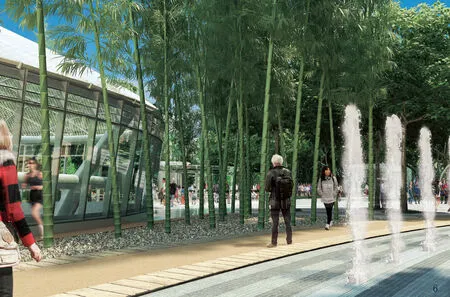

7 公园平面/Park plan
8 公共汽车候车层平面/Bus deck plan
9 二层平面/Second floor plan
10 乘客大厅平面/Concourse plan
11 站台平面/Platform plan
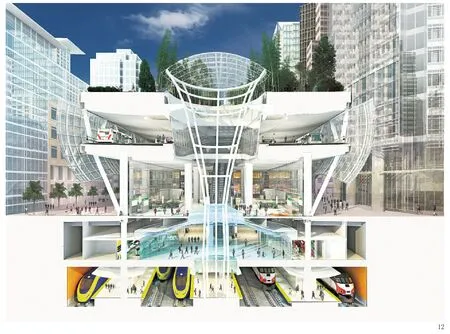
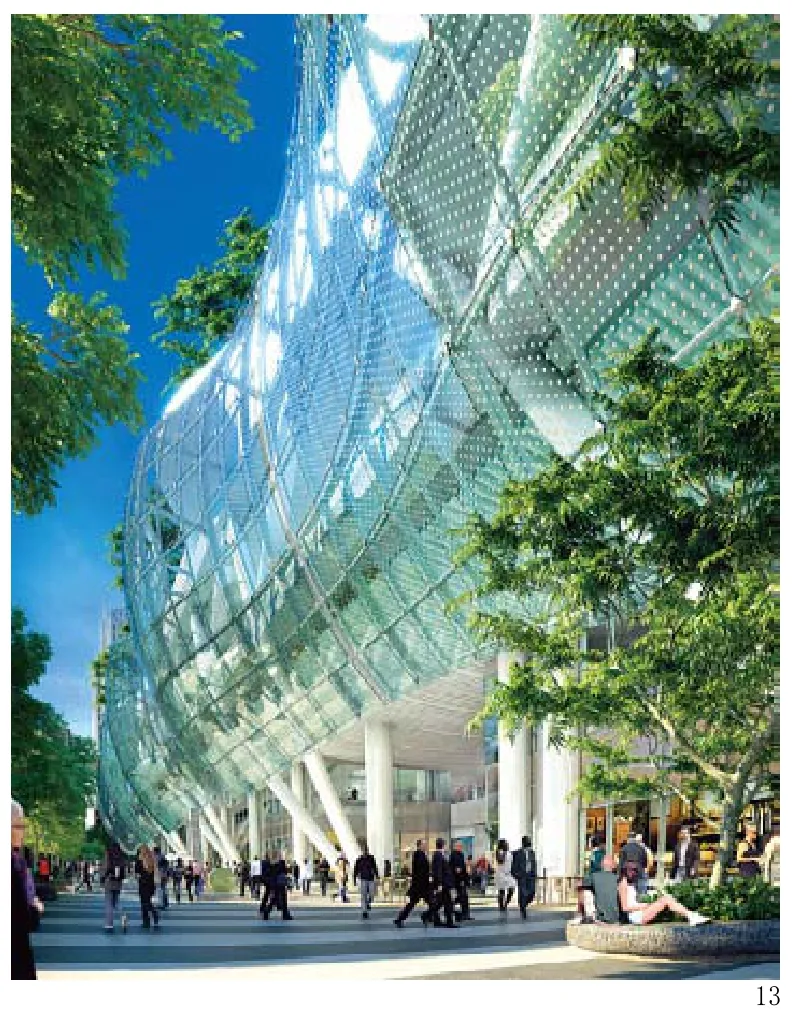
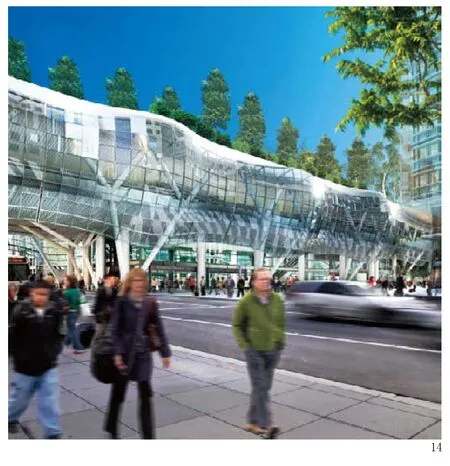
12 剖透视/Section perspective
13.14 外景/Exterior view

